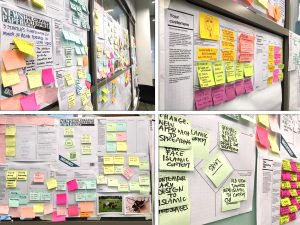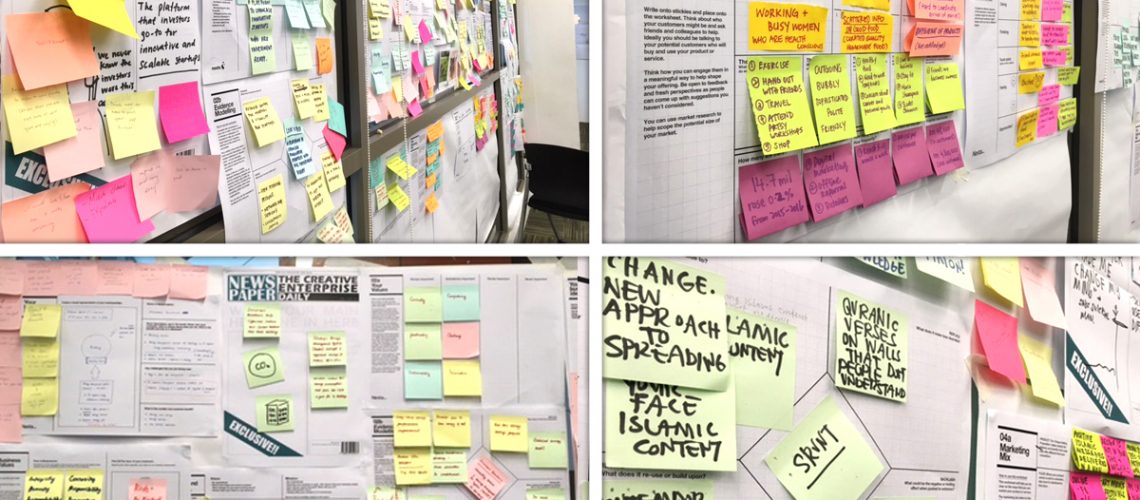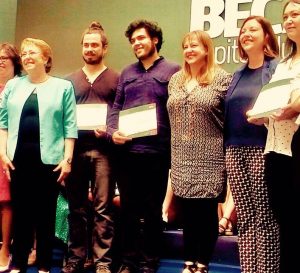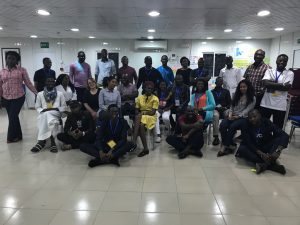One Year with Creative Entrepreneurs in Four Continents
January 31st, 2018
 Creative Enterprise Workshops: Chile, Colombia, Malaysia, Nigeria and Ukraine “This is extreme work-shopping”, joked Sonja Dahl, Nesta’s, Head of Learning Programmes as the temperature climbed over 40 degrees in Santiago, Chile. I was there facilitating the Creative Enterprise Programme (CEP) with Nesta and the British Council. The programme consists of practical workshops to support creative entrepreneurs to set up and grow their businesses. Last year I facilitated the programme in Chile, Colombia, Malaysia and Ukraine, and culminating in scaling the programme in West Africa with 25 creative hubs and 3 locally recruited associates of the programme. What have I learnt from this experience about building the creative economy? What kinds of creative enterprises are emerging in the different countries? Below are some of my thoughts from a year with creative enterprises across the world. Building the creative economy The challenges that countries face vary hugely and can include balancing their economic growth, skilling and employing young people, and providing more equal opportunities for women. For example, Chile’s economy is heavily dependent on mining, and the government wants to develop its creative economy to diversify and provide more opportunities across its dispersed cities. In regions such as West Africa, there is high graduate unemployment and the creative economy can provide pathways to work. Roar Nigeria is a University-embedded innovation hub that scouts for, trains, invests in and supports student start up enterprises. Some of the countries on the programme emerged from communist regimes a long time ago, yet the creative industries still tend to rely on state funding and are trying to grow to be more commercial and independent. The flexibility of the sector This flexibility provides low barriers to entry for people to be entrepreneurial and the ambition can stretch from micro-enterprises to for example Ventures Platform in Nigeria, which runs accelerators to develop big ideas to solve Africa’s challenges. What kinds of ideas? In cities that are becoming more open, enterprises are helping people to access new cultural opportunities and develop services for emerging tourism. Below are some of the places and creative entrepreneurs that particularly inspired me on CEP in 2017: Ukraine, Dnipro You never know where you will discover the best talent. I met gaming specialist Roman Sirenko who has set up HexWix, an eSports business where you can search for the team and players to participate in online games and tournaments. Taking part in the CEP gave Roman the tools to develop his business proposition and he went on to win a competition to be on Kyivstar’s acceleration programme (Ukraine’s national telecom operator). Colombia, Bogota One of Bogota’s defining characteristics is its street graffiti, and one CEP participant specialised in street art walking tours and exhibitions. Enterprises to access cultural events were popular here, such as a creative magazine, creating virtual reality museum tours and innovative textile and fashion companies. Chile, Santiago and Valdivia Valdivia is renowned for its film festival and its rainy weather. We managed to put the two together as Hosea Louis Rivas, the Valdivian Film Festival’s executive producer, gave an inspiring talk and hooked up with a local entrepreneur with a view to produce merchandise for future film festivals like macs with ‘Singing in the rain’ on them. Caption: The CEP programme was endorsed by Chile’s innovation agency Corfo and some of the participants got to meet Chile’s President Michelle Bachelet. Malaysia, Kuala Lumpur The youngest participant, at just 19, was Nor Marissa Lokman. She is an ice speed skating champion with a following she wanted to convert into a fashion business. Other participants ranged from social enterprises addressing energy and food issues to interior design, fashion and broadcasting businesses. Nigeria, West Africa Over 195 hubs applied for 25 places in the programme from Ghana, Senegal, Sierra Leone and Nigeria. The focus of the creative enterprise hubs ranged from fashion, literature, technology, women into technology to addressing local social issues. This was the start of a two-year programme to build the creative economy in West Africa and we trained three local associates to keep delivering and scaling the programme here. What’s next? More broadly, the Creative Enterprise Programme will continue to work with creative entrepreneurs around the world. Workshops will be delivered by both UK and local associates, to keep scaling and growing the creative enterprise economy Thanks to all involved Fiona Myles is a brand strategist and design thinker. The Creative Enterprise Toolkit is open source and is available to download on Nesta’s website. https://www.nesta.org.uk/publications/creative-enterprise-toolkit |



